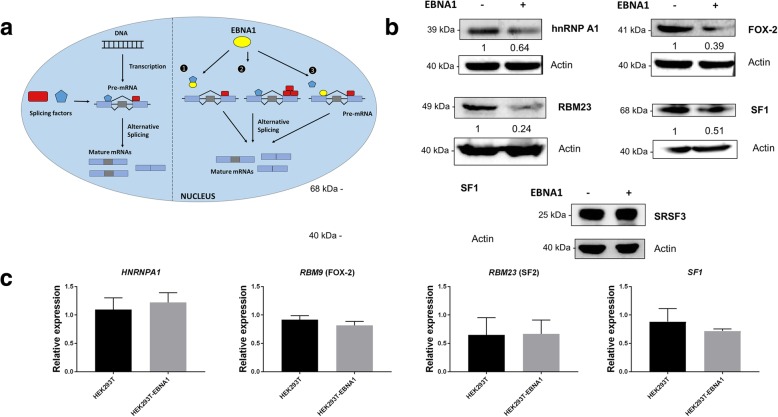Fig. 4.
Investigation into the molecular mechanism responsible for the modulation of AS by EBNA1; (a) Diagram representing the AS pathway in the nucleus and how the EBNA1 protein could potentially impact this pathway. Mainly, EBNA1 could bind to splicing factors [1], thus impacting either their activity or their binding to nascent pre-mRNAs; EBNA1 could also lead to changes in the expression of splicing factors [2], thus disturbing the ratio of enhancing and silencing splicing factors; EBNA1 could also bind to nascent pre-mRNAs [3], thus preventing the binding of other splicing factors and/or acting itself as a splicing enhancer or inhibitor; (b) Western blot analysis of splicing factors protein levels shows that EBNA1 diminishes proteins levels of hnRNPA1, FOX-2, RBM23, and SF1. Actin was used as a loading control on the same membrane after stripping, and relative quantitation reported to the actin level is indicated underneath. A Western blot against SRSF3 is also included and EBNA1 does not affect its level, hence showing that the effect of EBNA1 is not widespread against splicing factors in general; (c) qPCR analysis of splicing factors shows no statistically significant difference between control and EBNA1-expressing cells at the mRNA level (n = 3 for each condition)

